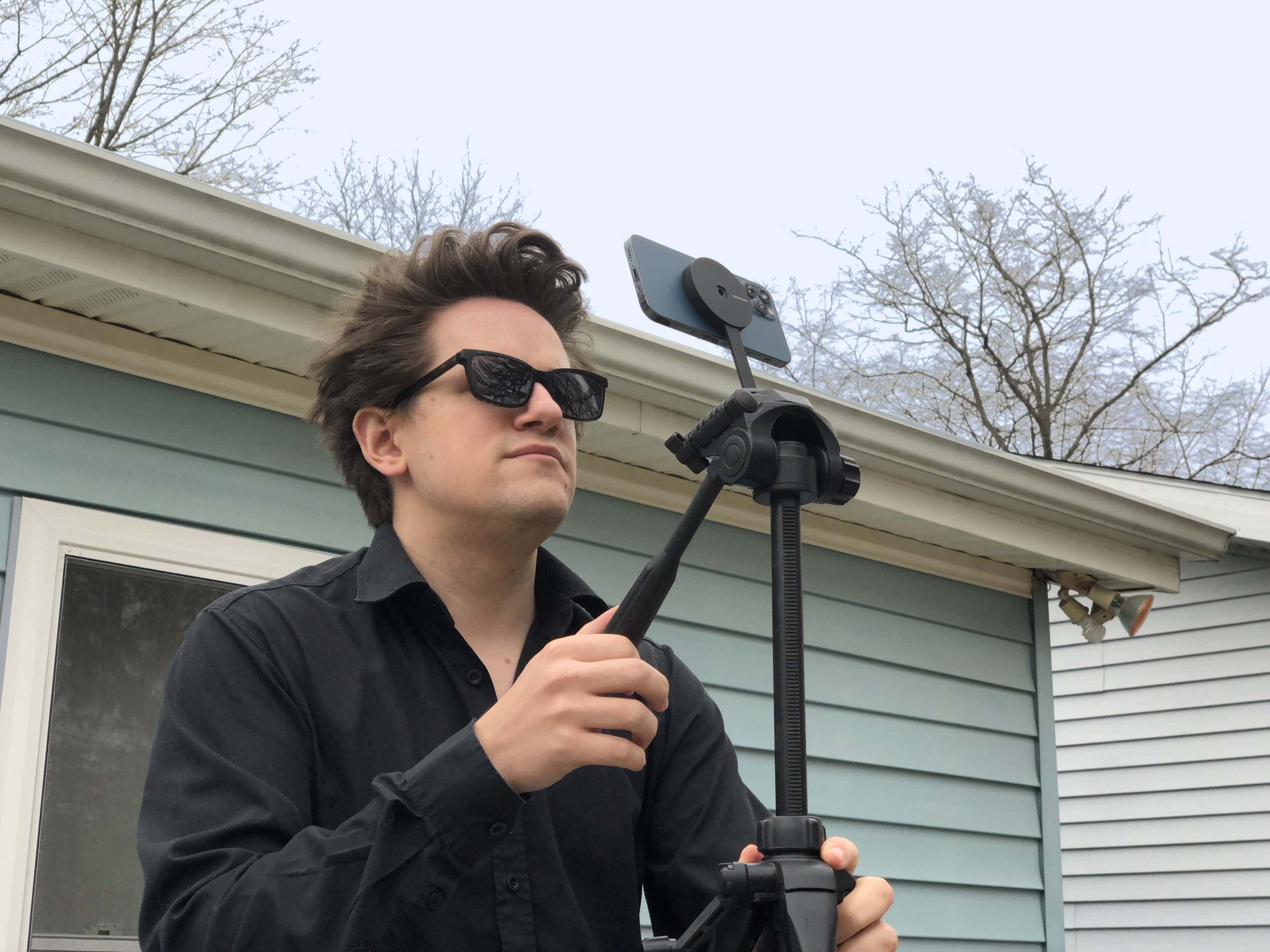[ad_1]
There are lots of questions about how to take solar eclipse photos with your iPhone. Firstly, can a solar eclipse harm your iPhone’s camera or lenses? Won’t the sun’s rays damage the camera?
Not according to Apple. Cupertino says it’s safe to photograph a total solar eclipse with your iPhone; but be sure to protect your eyes.
However, photographing the solar eclipse is hard without the right tools. To get a good picture of the solar eclipse with your iPhone, you’re going to need a 12-18x telephoto lens attachment, a solar filter and a tripod. Make sure you have everything you need before the big day next month.
Here’s how you can get prepared. Watch our new video or keep reading below.
This post contains affiliate links. Cult of Mac may earn a commission when you use our links to buy items.
How to take solar eclipse photos on iPhone
A total solar eclipse is one of the most awe-inspiring sights in all of nature. It’s dramatic and beautiful, especially when the moon’s shadow finally blots out the sun. The sudden darkness of the totality is stunning and unlike anything you’ll have ever seen.
To photograph it, preparation is key. The more prepared you are now, the more you can live the moment as the eclipse is happening without worrying about capturing it on your iPhone.
The Great American Eclipse
April 8, 2024 is the Great American Eclipse, so called because the path of totality will cover Mexico, Texas, the Midwest and the border between New England and Canada. There won’t be another total solar eclipse like it until 2044 and 2045. Check NASA’s website for maps of its path across the United States.
Taking a good picture of a total solar eclipse is a big challenge. Even your best iPhone shot is not going to rival images made by pros. Nonetheless, you can still get good snaps with proper preparation.
Never look at the sun directly
Note: Never look at the solar eclipse through a camera lens, telescope or binoculars: This will fry your eyes instantly. Don’t even look at the sun with your naked eyes. Doing so can damage your eyesight permanently, even when the sun is mostly eclipsed. It’s only safe to look at the eclipse during totality, when the sun is entirely blocked by the moon.
Prepare to photograph the eclipse now
If you want to get good pictures of the total eclipse — especially the spectacular ring of fire — pulling out your iPhone at the last second isn’t going to cut it.
Now is the time to stock up on filters, lenses and tripods — all of which can be acquired pretty inexpensively — and make sure your Apple Watch is set up to act as a remote. It’s also a good idea to practice photographing the sun now, preferably in the same location you’ll be watching the eclipse.
Pro tip: The full moon will give you a good idea of how large the sun will appear during the eclipse. Practice photographing the moon now, and it’ll give you a good idea of how big the sun will appear with your iPhone’s standard lenses or a telephoto attachment.
1. Avoid blur; get a tripod
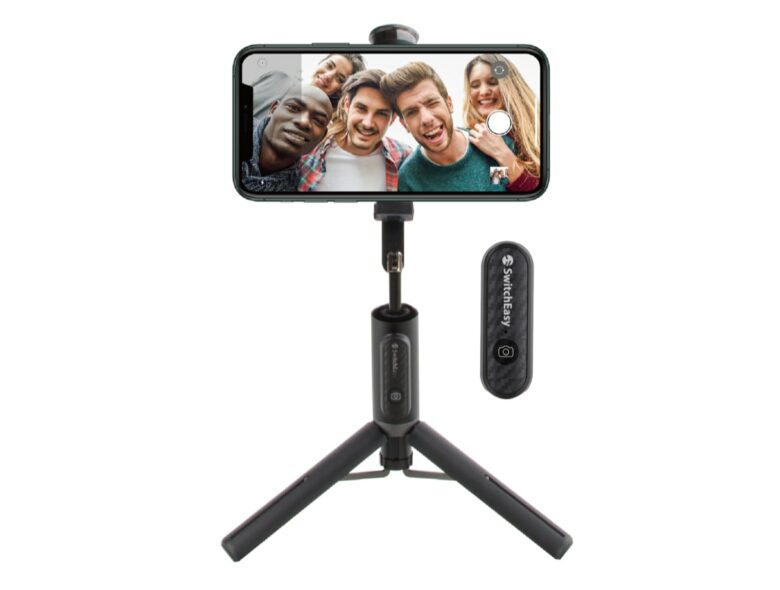
Photo: SwitchEasy
A tripod will keep your phone steady at the perfect angle. You can pay better attention to everything else going on if you don’t need to worry about holding the phone in your hands.
2. Attach iPhone with a tripod phone mount
If you have a tripod but you don’t have a way to mount your phone, I highly recommend a MagSafe tripod mount.
For getting a good video of the darkness in the middle of the day, a tripod and a phone mount is all you’ll need. But if you want to try to get solar eclipse photos of the sun itself, here are three more things you’ll want to pick up.
3. Make your own iPhone solar filter
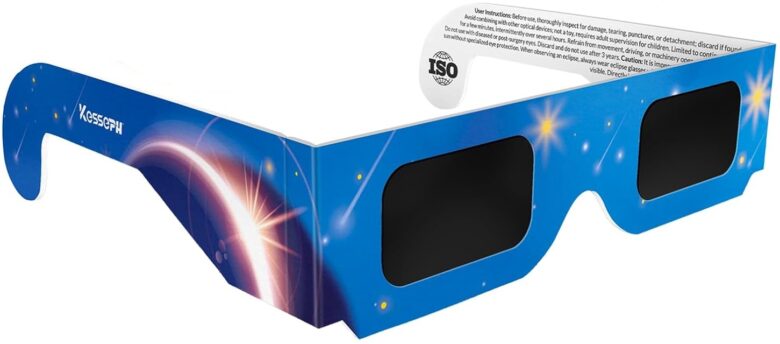
Image: Kesseph
Pointing your phone camera at the sun won’t hurt your phone’s camera sensor — it’ll just be really hard to get a picture that isn’t blurry. If you want a good, clear picture of the sun, you’ll need a solar filter.
If you have a spare pair of solar eclipse glasses, you already have one! Just cut it up and tape the filter over the lens of your phone. Don’t use sunglasses — they’re nowhere near strong enough.
If you don’t have any old eclipse glasses, these VisiSolar Smartphone Photo Filters are well suited for use with an iPhone. The large circular filter entirely covers the three-lens camera setup of the latest Pro models. For best results, remove your case first.
Note: You’ll want to remove any filters during totality. You’ll need filters right up to the moment the sun is blotted out, but when the sun is fully eclipsed, you should ditch the filters. The sun’s corona is much fainter than the photosphere, so any pictures taken at this time with a filter will be extremely murky. It’s also safe to look at the eclipsed Sun with your naked eye. In fact, you won’t see much of anything if you’re still looking through your eclipse glasses or a filter.
4. Get way better eclipse shots with a zoom lens
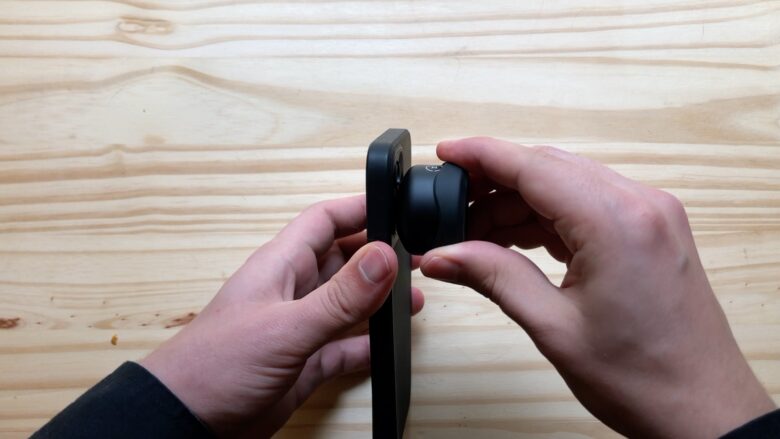
Photo: D. Griffin Jones/Cult of Mac
If you want a good picture of the solar corona (the white ring of light called the “ring of fire”), you’ll need a bit more zoom than you get out of the box with your iPhone.
If you put a 2× zoom lens over the iPhone 15 Pro Max 5× Telephoto lens, then you’ll get an impressive 10× optical zoom for a great shot of the sun.
The Moment Tele Lens is the easiest way to get more zoom, using their simple screw-on system.
It’s a lot to buy, but when you have the whole system, you’ve effectively doubled the capability of your iPhone camera.
5. Use a camera app with manual controls
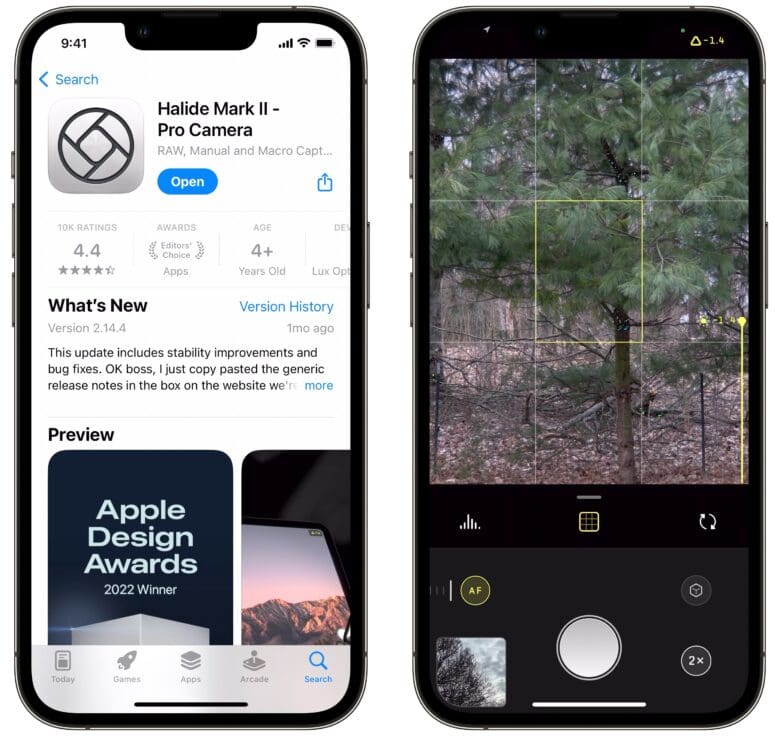
Screenshot: D. Griffin Jones/Cult of Mac
Sometimes, the stock Camera app on the iPhone doesn’t play nicely with the Moment lenses — much less the weird lighting conditions of a solar eclipse.
If you want fine-tuned manual controls, just like a full-size dedicated camera, I recommend using Halide. This app lets you manually set the lens, the focus, the exposure, the resolution and more.
Tap the 1× button in the bottom corner to manually set the lens; drag your finger up or down on the camera screen to set the exposure. Tap AF to turn off autofocus and set the focus manually. For capturing the sky, you can drag it all the way to 1.0 for maximum distance.
Halide packs in loads of pro features, but thanks to its clever design, it isn’t impossible for novices to figure out like a DSLR camera.
Price: $2.99/month, $11.99/year or $59.99 lifetime
Download from: App Store
6. Mount your iPhone on a telescope
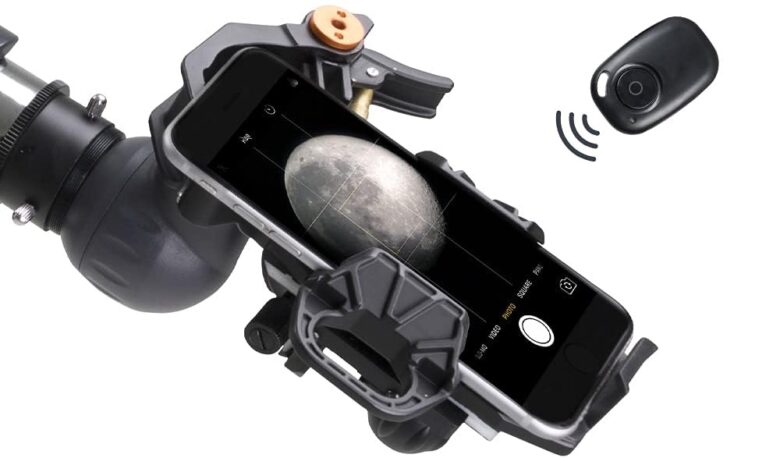
Image: Celestron
Even better than zoom lenses is a telescope. You’ll need an iPhone mount like Celestron’s $80 NexYZ DX Kit, which holds your iPhone next to the eyepiece and includes a Bluetooth shutter release remote. You can even pick up a cheap scope, like the Celestron EclipSmart, for $130, which includes a solar filter.
7. Trigger eclipse pictures with Apple Watch — Siri is even better
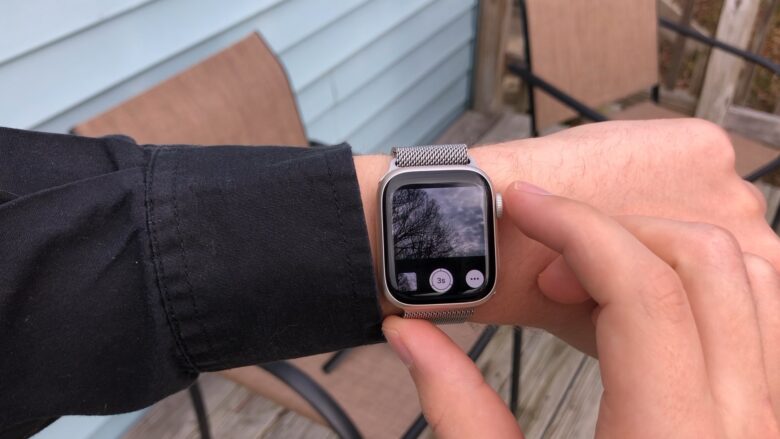
Photo: D. Griffin Jones/Cult of Mac
Once you’ve got everything set up — tripod, lenses, and filters — you’ll want to make sure your Apple Watch can act as an iPhone camera remote. Luckily, it’s easy. Open the Camera Remote app on your Apple Watch. Twist the Digital Crown to zoom. To adjust exposure, just tap on the key area of the photo on your Apple Watch’s face. To take the shot, tap the Shutter button. By default, there’s a three-second delay.
Even better, use Siri. Just tell your Apple Watch: “Take a picture” and it’ll snap a shot with your iPhone. Make sure this works beforehand and you won’t have to take your eyes off the eclipse as it is happening.
You can also try using your iPhone’s timer setting.
8. To get a great eclipse shot, practice beforehand
For many of us, this upcoming total solar eclipse is literally going to be a once-in-a-lifetime event. Don’t ruin it by futzing about with your iPhone. Best to practice now, before the big day. Luckily, the sun is going to be the same brightness as the sun during an eclipse, so play around with filters and lenses now.
You’ll want to figure out the best composition for your photos, so try to figure out where the sun will be in the sky during the total eclipse.
Can a solar eclipse damage iPhone cameras?
Photographing the sun will not damage your iPhone’s camera or lens. The cameras and lenses are designed to capture light — that’s the sea they swim in — and even direct rays from the sun won’t harm them.
However, leaving your iPhone camera and lens pointed directly at the sun may cause your iPhone to overheat. According to Apple, iPhones are designed to operate at temperatures between 32º to 95º F. Apple explicitly advises against “leaving your device in direct sunlight for an extended period of time.”
If your iPhone overheats, it’ll automatically regulate its behavior to prevent damage, including shutting off the screen, dialing back charging and disabling wireless. If your iPhone overheats, you should see a warning message on the screen.
To avoid overheating, use your iPhone only for short stretches of time, and definitely try shading it when not in use.
Can you look at a solar eclipse with your iPhone?
Theoretically, yes, you could watch the total solar eclipse on your iPhone’s screen instead of looking at it directly. But why would you want to?
Watching the eclipse onscreen is going to be blurry, wobbly and overexposed. Plus, holding your iPhone up to the eclipse, you greatly risk looking directly at the sun instead. Plus, you’re going to need a solar filter for your iPhone, and if you have one, you might as well use it to look at the sun directly. It’s not worth the trouble.
Don’t forget to take pictures around you
To be honest, the best pictures you’ll likely take during the total solar eclipse won’t be of the sun. It’ll be the landscape and people around you. Be sure to get pictures of your friends and family watching the eclipse with you. Take a selfie with the eclipsed sun behind you. Or get a Reservoir Dogs shot of everyone in their eclipse glasses.
Again, it’s a good idea to practice. Before the big day, take some photos of people and your surroundings just before or after sunset. The light level at twilight will be similar to the totality.
Check out more tips on how to take the best pictures.
[ad_2]
Source Article Link

